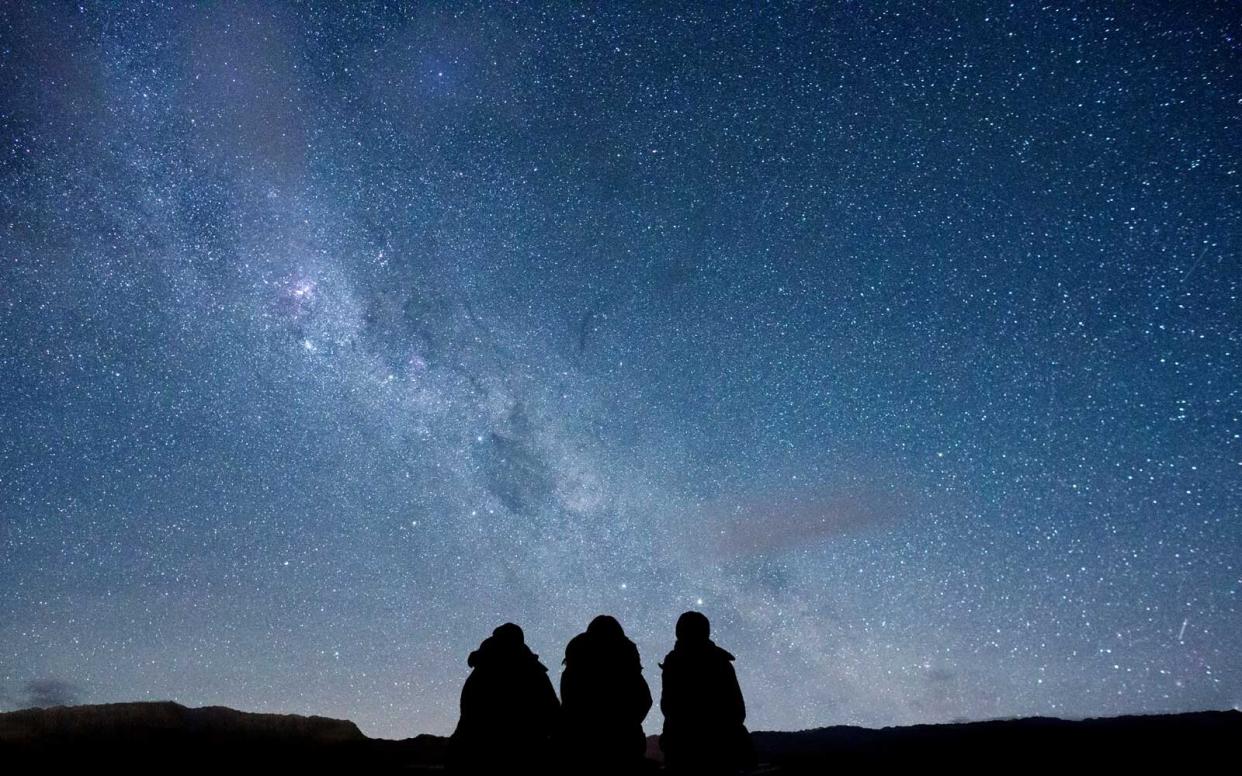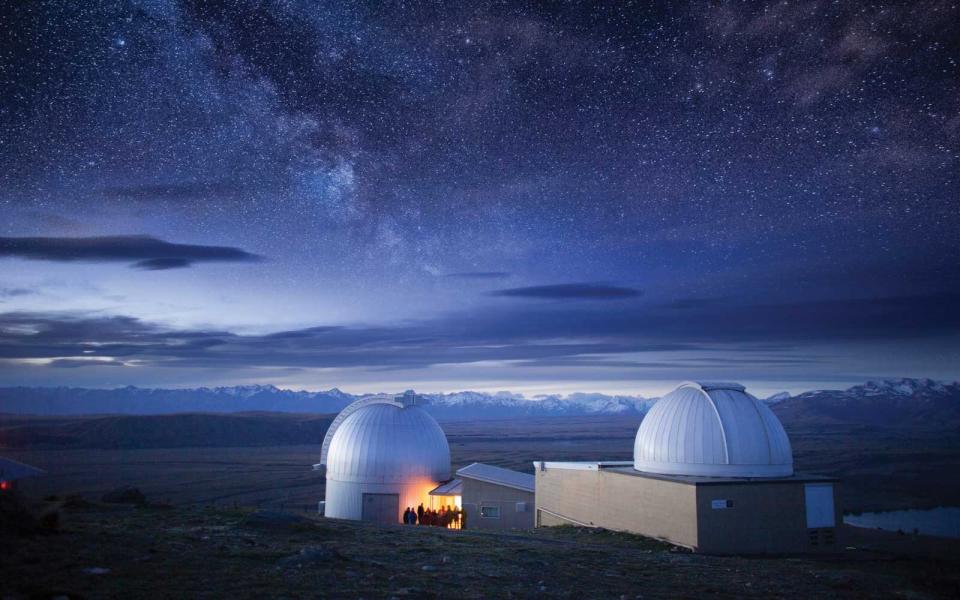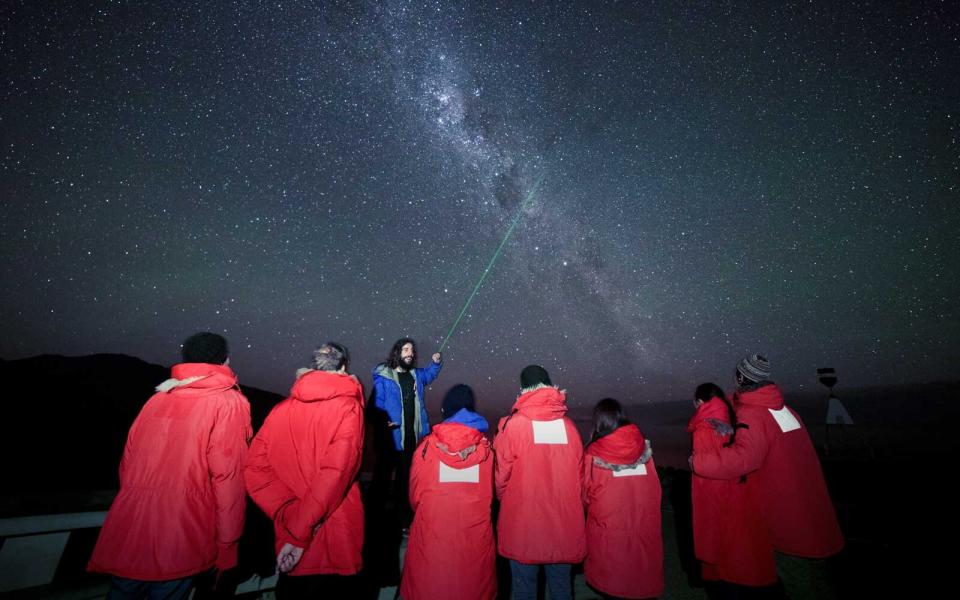This Is What It's Really Like to Stargaze at a Dark Sky Reserve

Courtesy of Ngāi Tahu Tourism
Picture a mountaintop so dark you can just make out the outline of your partner's body, but not his face. So dark you stumble, embarrassingly, on its rocky surface — a place illuminated only by keychain-sized flashlights with red light bulbs so small they'd fit on your pinky nail.
That's how dark it is at Mount John Observatory, an astronomical research observatory in New Zealand's Aoraki Mackenzie International Dark Sky Reserve — one of the premier spots on Earth to explore the stars.

Courtesy of Ngāi Tahu Tourism

Vaughan Brookfield/Courtesy of Ngāi Tahu Tourism
The International Dark Sky Association offers six designations for the darkest places in the world to view the stars. According to its website, "reserves" such as the Aoraki Mackenzie International Dark Sky Reserve "consist of a dark 'core' zone surrounded by a populated periphery where policy controls are enacted to protect the darkness of the core."
At the Mount John Observatory and below it, in the town of Lake Tekapo, lights are strictly controlled, with many homes and establishments limited to using low-sodium lights, which emit an orange-red glow that interferes less with the Earth's atmosphere and our ability to view stars with the naked eye — and through Mount John Observatory's many telescopes.
Like I said, it's a dark, dark place. But we're not stumbling around in the dark just yet.
On a brisk night in March, my husband and I join a tour group ascending to the summit of the observatory in a tour bus using in its headlamps the same red lights that can be found in our flashlights, casting an eerie orange glow on the winding road that will bring us to the 3,376-foot-tall peak of Mount John Observatory. There, we're told by our British tour guide, we might have the chance to spot the Milky Way, the Southern Cross, and the Canis Major, but our chances are slim because tonight's cloudy sky offers a visibility of just 40 percent — quite low for the observatory, which registers a 2 on the night brightness–measuring Bortle Scale.
To take our minds off our sour star-sighting chances, our guide asks us several true-or-false trivia questions as the bus climbs higher to the top of Mount John: The International Space Station orbits the Earth every 90 minutes. (True.) Buzz Aldrin was the first man to walk on the moon. (False.) The Earth is flat. (False. Definitely false. I'm looking at you, Kyrie Irving.)

Courtesy of Ngāi Tahu Tourism
The guide explains why the bus is using red-light head lamps, and why we have been given our tiny red-light flashlights: to shield the area from the light pollution most of the world experiences. "It's quite an amazing thought that 70 percent of the world can't see the Milky Way — and most of the stars at all," he muses, then adds, "It's a very depressing thought."
We're prepared for the worst — regretting paying some $240 for our tour — but as soon as we step off the bus, I see more stars than I've ever seen. As our guide explains the layout of the observatory, I begin to count, as best as I can, and reach 198 before I have to stop.
Our eyes will take 20 minutes to adjust to the dark, our guide tells us, as he points out the Milky Way and warns us against using our phones, with their bright screens, while we're here. "Anything that you see that is white," he says, "aren't clouds but are clouds of stars."
We're served hot chocolate as we spot the Southern Cross with our naked eyes, the closest star of which is 88.6 lightyears away. "Think about this," our guide poses to us. "Our sun is a star that is close to us, a star that we're gravitationally bound to. Every star you see above you is actually another sun lightyears away in the depth of space — and every one of those points is another solar system with planets going around it as well."
In other words, I've counted 198 other solar systems, and I can easily see some 2,000 more.
We see Alpha Centauri, the nearest star system to Earth, about four lightyears away, our guide tells us. We see Beta Centauri a whopping 390 lightyears away. And we spot Sirius, also dubbed the Dog Star — which Harry Potter fans will appreciate. It's the brightest star in the sky, more than 25 times the brightness of our sun, according to our guide.
Through a small telescope, we see the Wishing Well Cluster, an array of approximately 150 stars that are some 1,500 lightyears away. And we see a star that astronomers say could have already become a supernova, exploding into the universe.
Two hours later, driving back down the mountain in the bus, I think to myself: We saw so many stars at just 40 percent visibility—imagine what we would have seen with clear skies.
Perhaps one day you can tell me. Tours to the Mount John Observatory are available every night, and offered in English, Japanese, and Mandarin. You can find more information here.